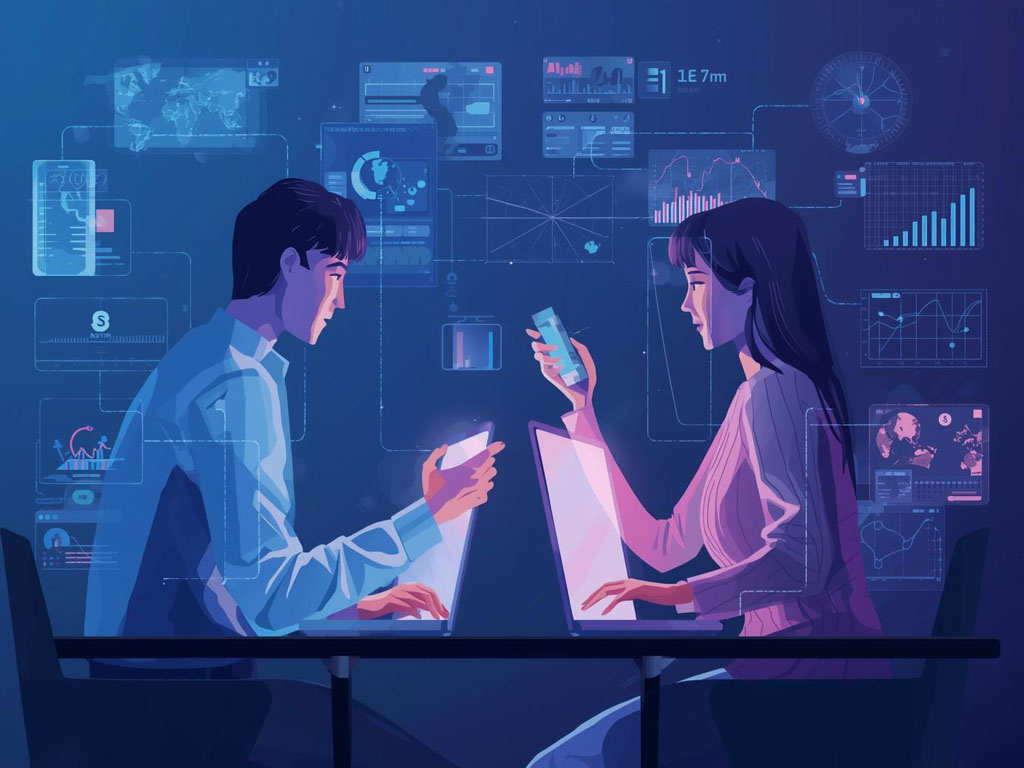In the world of online dating, competition is growing: millions of people are searching for “the one” through apps and websites. But how can you find the right match among this ocean of profiles and messages? This is where artificial intelligence (AI) steps in — a technology that changes the rules of the game. Algorithms analyze your preferences, communication style, photos, and even your activity time — and based on this data, they suggest matches with a higher likelihood of compatibility. But can you really trust a machine’s choice? And will genuine emotions get lost among all the data? Explore in detail how AI is changing online dating, what advantages and risks it brings, and what the future holds for this union of technology and human emotions.
How AI Changed the World of Online Dating
The Evolution of Matching Algorithms
Online dating started simply: profiles, photos, and manually filled interests. Just a few questions — and you’d be matched with a potential partner. But this approach was very limited: the number of factors that could be considered manually was small.
When AI and machine learning entered the picture, it became possible to analyze massive amounts of data — from text messages to user behavior patterns. Based on that, algorithms can now predict who will respond, who will be more interested, and who is likely to form a long-term relationship.
For example, apps like Tinder, Bumble, and eHarmony already use compatibility algorithms — analyzing not just demographics, but also writing style, activity frequency, and behavioral patterns.
How Compatibility Algorithms Work
A compatibility algorithm is a set of functions that take in numerous parameters (age, location, interests, answers to questions, reactions, etc.) and produce a “compatibility score” between two users. The higher the score, the more likely the pair will be interested in each other.
In addition, algorithms use machine learning: based on successful (or unsuccessful) past matches, they “learn” to adjust the weight of various traits. For example, they might notice that a certain group of users tends to ignore profiles with a specific writing style — and then lower the importance of that factor.
In many cases, recommendation systems are used (similar to those on streaming platforms): based on activity history and similar users, they suggest potentially successful matches.
What are the Benefits of AI in the Dating World
- Speed and scale — an algorithm can process thousands of candidates in seconds, unlike a human.
- Personalization — you don’t see “everyone,” but only those who are most likely to be compatible with you.
- Efficiency — less time wasted on “pointless swipes” or conversations that go nowhere.
- Better user experience — less noise, more relevant matches.
- Self-learning — the algorithm adapts to changes in your tastes or communication style over time.
Personalization and “Smart” Recommendations
How AI Analyzes Preferences
For a user to feel that the service “understands” them, the algorithm looks for behavioral patterns:
- Text messages: sentence structure, vocabulary, and emotional expressions.
- Clicks and reactions: who you view, who you like, whose profiles you revisit.
- Activity time: what time of day you’re most active and how long you use the app.
- Photos and their characteristics: image processing (aesthetics, lighting, etc.) can also enhance the model.
Based on this, a multidimensional profile is created, allowing the system to search not only for “exact interest matches,” but for potential compatibility as well.
Examples of an “Ideal” Match
Imagine person A, who often reads travel-related content, likes photos with ocean themes, chats mostly at night, and uses emojis frequently. The algorithm might “realize” that these traits correlate with people B, C, and D — and show them more often, even if they don’t have identical interests but share a similar communication style and behavior.
This works like a “hint-based search” — considering not just what you explicitly say, but how you act.
What is The Role of Machine Learning and Self-Improvement
Over time, the algorithm records which suggested pairs start conversations, who replies, and who meets in real life (if feedback is provided). Based on this, it adjusts the weights of different characteristics.
In other words, the system “learns” and becomes more accurate over time — meaning your recommendations can get increasingly relevant.
What is AI-based Security and Profile Verification with AI
Fake Accounts and Scams
Online dating has always been a tempting target for scammers and bots. But with AI, suspicious behavior can now be detected more effectively:
- Bot detection: analyzing the rhythm of conversations, response patterns, and odd timing.
- Photo verification: reverse image search, metadata analysis, and “deepfake” detection.
- Behavioral anomalies: if an account suddenly becomes overly active or exhibits unnatural engagement spikes, the system flags it.
Biometric Technology and Verification
Some services already use biometrics: during registration, a user takes a selfie or short video, which is compared with the profile photo. This greatly reduces the number of fake accounts.
Moreover, AI can analyze eye movements, facial expressions, and behavioral cues (like how someone turns their head when prompted) to confirm that there’s a real person behind the screen.
How AI Makes the Environment Safer
- Warns users about potentially dangerous profiles that show signs of fraud.
- Automatically blocks accounts that exceed certain risk thresholds.
- Analyzes risks in real time — if someone starts asking for money or sending suspicious links, the system can pause the chat or issue a warning.
Thus, AI not only matches people but also protects them.
How Virtual Assistants and Chatbots work in Dating
Helping with Message Writing
One of the latest trends is using AI as a chat assistant — helping you craft replies, choose conversation topics, or keep the dialogue flowing.
For example, there are projects like AI-Wingman or built-in app features that suggest message templates or even generate text automatically based on your tone and style. The key is that these messages should sound natural, not robotic.
AI as a Conversation Partner
Some systems even offer a full-fledged virtual partner — a chatbot you can talk to. For example, projects like Replika or the use of ChatGPT as a simulator of real conversation.
This approach has pros and cons: it can help develop communication skills or boost confidence, but can an artificial partner really replace genuine emotions?
Can AI Replace Real Emotions?
No, at least not completely. While AI can imitate logic, tone, and even empathy based on data, it lacks true authenticity. Emotions, body language, and intonation are things algorithms still struggle to reproduce convincingly. That’s why such tools should be viewed as complements, not substitutes, for real human interaction.
What are the Ethical and Psychological Aspects Of
The Line Between Help and Manipulation
When an algorithm suggests matches, it influences your choices — sometimes subtly imposing preferences. Where does help end and manipulation begin? If the system hides profiles that don’t fit its model, is that fair?
There’s also a risk of “filter bubbles” — when you’re constantly shown similar people and lose exposure to diversity.
The Risks of Automation
- Overreliance on algorithms — users might start believing that “the algorithm knows best” and ignore their instincts.
- Psychological vulnerability — if AI suggests “the best match,” a person may suppress their own feelings.
- Built-in bias — if an algorithm carries hidden biases (appearance, ethnicity, etc.), they can become amplified.
How to Preserve Authenticity
- Treat AI suggestions as guidance, not as final truth.
- Trust your own intuition, emotions, and doubts.
- Move communication offline — the goal of dating is people, not algorithms.
The Future of AI in Dating
Virtual and Augmented Reality
In the coming years, we’ll see:
- Virtual dates in the metaverse — you and your match can walk, talk, or watch a movie together in a 3D space.
- Augmented reality (AR) — profiles might appear in the real world around you (for example, as you walk down the street).
Emotion-Detecting Algorithms
The future is not just about analyzing text or behavior, but reading emotions — through tone of voice, facial expressions, even heart rate (via wearable devices). This will allow for deeper emotional compatibility in matches.
The Fusion of Humans and Machines
We may see “hybrid” relationships: a human + AI assistant, where AI helps improve communication, interpret signals, and give real-time advice — but never replaces genuine connection.
Conclusion
AI is already deeply integrated into online dating — not as a cold machine, but as a helpful assistant that makes finding matches faster, safer, and more meaningful. The key is to stay human: to trust your intuition, emotions, and the ability to truly “feel” another person beyond algorithms.
Consider not only what the AI assistant advises, but also what your heart tells you. Use AI as a guide, but don’t neglect your own voice.



